Ground lamb brings a distinctively rich, gamey flavor that makes it stand out from regular beef. This unique taste makes ground lamb recipes the life-blood of Mediterranean and Middle Eastern cuisines.
Many home cooks tend to skip this versatile protein. Ground lamb is available as an everyday meat option that can create restaurant-worthy dishes. You can craft a hearty kafta with cumin and paprika or build a nutritious Mediterranean bowl topped with fresh vegetables and feta cheese. The possibilities seem endless.
Let’s discover the professional secrets to create exceptional ground lamb dishes. This piece will help you become skilled at chef-approved cooking techniques and selecting the right cuts. These tips can revolutionize simple ground lamb into restaurant-style masterpieces any chef would admire.
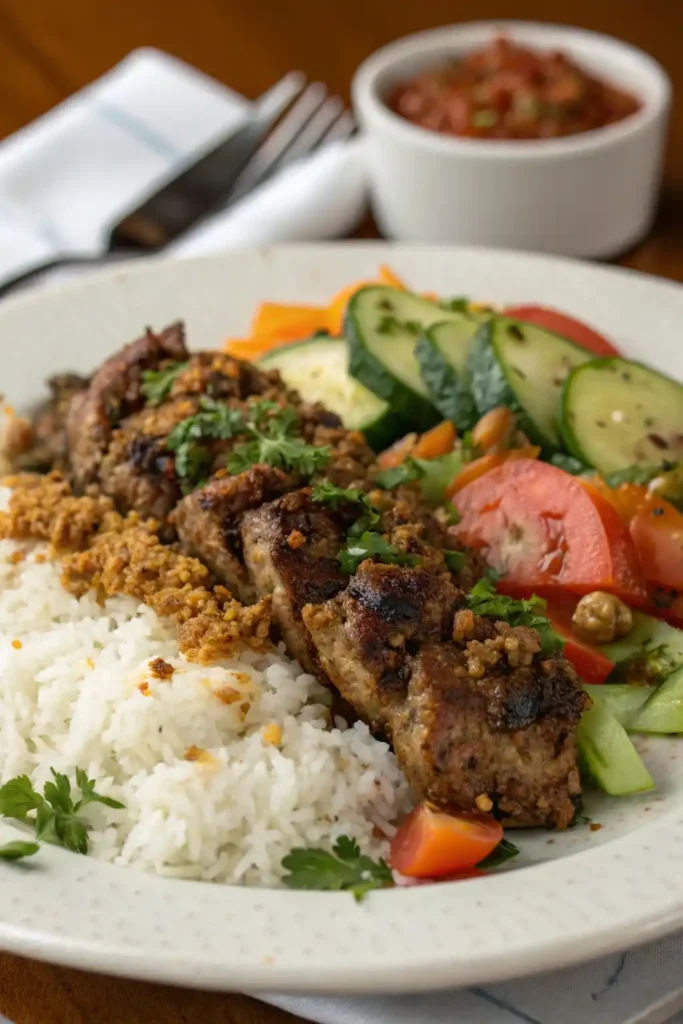
Table of Contents
Understanding Quality Ground Lamb Selection
The path to creating exceptional lamb dishes begins with choosing the right ground meat. Professional chefs understand that quality ingredients make outstanding recipes, and ground lamb plays a crucial role.
How to identify premium ground lamb cuts
The finest ground lamb usually comes from boneless shoulder cuts after careful trimming. Quality ground lamb should have a fine texture and firm consistency with bright red coloring and white marbling throughout. You’ll want to see firm, white fat trim that isn’t too thick.
Several specialty suppliers sell 100% grass-fed ground lamb – a top choice among chefs. These lambs roam freely in pastures and eat natural grass, which gives their meat a distinct flavor profile. The meat also comes free of antibiotics and added hormones, which adds to its premium quality.

Fat-to-meat ratio for restaurant-quality dishes
The fat-to-meat ratio makes all the difference in restaurant-quality ground lamb dishes. Premium ground lamb usually has an 80/20 lean-to-fat ratio that balances flavor and moisture perfectly. In spite of that, many food experts say a 70/30 lean-to-fat ratio creates the juiciest and most flavorful results.
Supermarket ground lamb recipes typically contains about 20% fat – a bit too lean for the best results according to professionals. Ground lamb with too much fat (around 40%) can cause problems. The meat might fall apart during cooking or release too much grease.
Fresh vs. frozen: what chefs prefer and why
Fresh lamb might seem like the better choice, but science tells us something interesting about the differences. Fresh lamb looks lighter and redder, while frozen meat appears darker with a yellow tinge. Frozen-thawed meat loses more fluid during cooking than fresh meat.
Research shows freezing can enhance certain lamb flavors, including fatty odor, frying flavor, and liver taste. Fresh lamb tends to be juicier than its frozen counterpart.
Freezing helps make lamb available all year round, but professional chefs lean towards fresh lamb because it keeps moisture better and has superior texture. Fresh lamb ended up being the best foundation for truly exceptional ground lamb recipes, even though frozen lamb can be convenient.
Essential Spice Combinations for Authentic Flavors
Professional chefs speak a secret language of spices to cook ground lamb. The perfect blend of herbs and spices can change ordinary ground lamb into amazing dishes you’d find in high-end restaurants.
Mediterranean spice profiles for lamb
Mediterranean cuisine relies on time-tested herbs that work beautifully with ground lamb’s natural richness. A classic Mediterranean blend has coriander, cumin, cinnamon, and cayenne that add warmth and depth. Mint, cilantro, and parsley bring freshness as finishing touches. Rosemary stands out as the ultimate Mediterranean herb for lamb and creates what chefs call “the perfect marriage of flavors.” Greek dishes showcase lamb as their star protein with oregano, thyme, and garlic completing the Mediterranean flavor palette.
Middle Eastern flavor foundations
Middle Eastern cuisine takes ground lamb to new heights through unique spice combinations refined over centuries. Za’atar and sumac are crucial to authentic Middle Eastern lamb dishes. Sumac adds a bright, lemony tang that cuts through the meat’s richness. Traditional lamb kofta shines with its blend of cumin, coriander, sumac, garlic, and onion. The famous “7-spice” mix (cumin, coriander, cinnamon, cloves, nutmeg, black pepper, and allspice) creates the base for many Middle Eastern ground lamb dishes. Cardamom adds another layer of complexity.
Indian and South Asian spice blends
Indian lamb dishes come alive through layered spice techniques. Garam masala serves as the core spice blend with coriander seeds, cumin seeds, caraway, black pepper, star anise, cinnamon, cardamom, cloves, fennel seeds, bay leaves, and dried ginger root. Authentic Indian ground lamb recipes often feature Kashmiri red chili powder, turmeric, and dried fenugreek leaves (kasuri methi). Whole spices like bay leaves, green cardamoms, cinnamon sticks, and black cardamom release their aromatics during cooking.
Creating your own signature spice mix
Your unique lamb seasoning should:
- Begin with cumin, coriander, and garlic powder as a base
- Mix in warming spices like cinnamon or nutmeg for depth
- Add herbs like rosemary, thyme, or mint for freshness
- Complete with heat elements (cayenne, aleppo pepper) to taste
Professional chefs suggest toasting whole spices before grinding them. This intensifies their flavor. Add spices near the end of cooking to avoid burning and bitter tastes.
Professional Cooking Techniques for Ground Lamb Recipes
The real difference between restaurant-quality ground lamb dishes and home cooking lies in mastering the cooking process. Professional chefs use specific techniques every day that make their dishes stand out.
Proper temperature control for perfect texture
Ground lamb needs to reach an internal temperature of 160°F to be safe to eat, unlike other lamb cuts you can serve medium-rare. The temperature precision matters a lot to keep the meat from drying out. A digital meat thermometer helps you get it right, as even small temperature differences can affect the final texture.
Chefs recommend taking ground lamb off the heat when it’s about 5-10°F below your target temperature. The carryover cooking will finish the job while the meat rests. This helps avoid overcooking but keeps the meat safe to eat.
Browning techniques that maximize flavor
The Maillard reaction creates that perfect brown crust and brings out ground lamb’s full potential. Here’s how to get those restaurant-quality results:
- Pat the ground lamb dry with paper towels and bring to room temperature
- Heat a stainless steel or cast iron pan to medium-high heat
- Add minimal oil with a high smoke point
- Spread lamb in an even layer without overcrowding
- Let it brown properly before flipping
Chef Ryan McCaskey of two-Michelin-starred Acadia emphasizes, “Make sure that the sear or grill is hard and fast,” as this prevents slow-cooking the meat and preserves juiciness.
Moisture retention methods used by chefs
Chefs use specific techniques to curb ground lamb’s tendency to dry out. They cook over medium heat instead of high heat so the fat renders slowly and keeps the meat moist. Some chefs like Einat Admony mix ground lamb with ground beef equally to help with lamb’s leaner profile.
The meat needs to rest covered for at least 10 minutes after cooking. Chef Bludhorn notes, “Too often lamb is sliced too soon, and the juices have not had a chance to go back into the meal.”
Signature Ground Lamb Dishes from Around the World
Ground lamb is a fantastic base that chefs use to create signature dishes worldwide. Countless cultures have developed their own special ways to prepare this flavorful meat.
Perfecting lamb kofta and kebabs
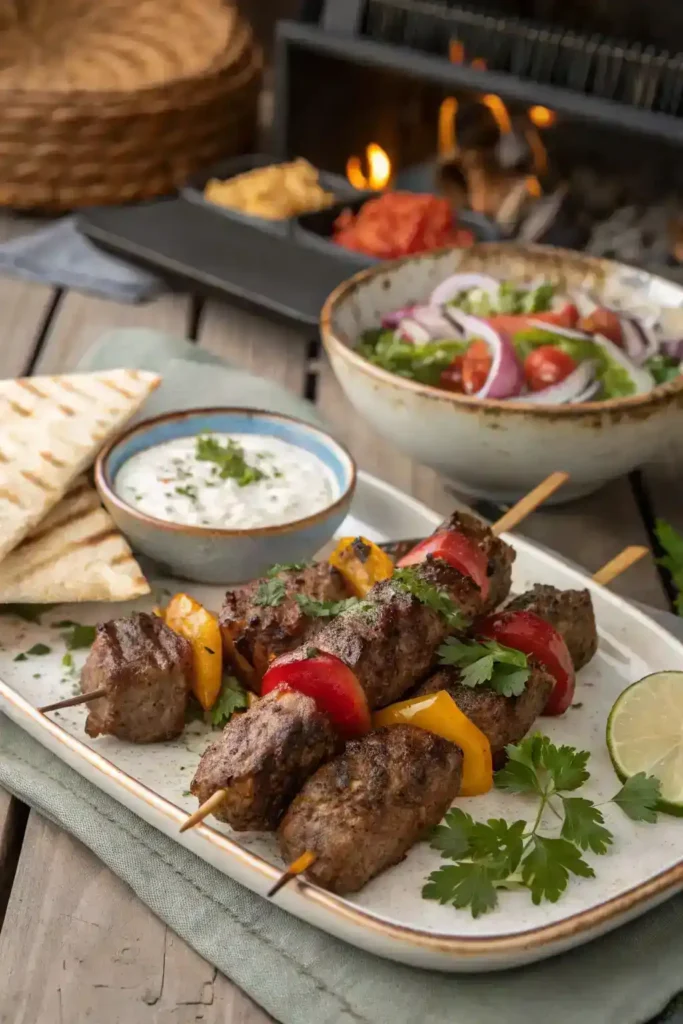
Middle Eastern lamb kofta brings together ground lamb with onions, garlic, parsley and a special mix of spices like coriander, cumin, cinnamon, and allspice. Here’s how to make it authentic:
- First put onions, garlic, and fresh herbs through a food processor
- Combine with ground lamb, bread (squeeze out extra water), and spices
- Form 1-inch thick ovals around skewers so they’ll grill evenly
- Cook on medium-high heat for 4 minutes each side until it reaches 145°F inside
Soak bamboo skewers in water for 30 minutes before grilling to keep them from burning. The kofta tastes best served right away with tahini sauce, warm pita, and traditional sides.
Creating authentic lamb moussaka
This Mediterranean classic layers eggplant, seasoned ground lamb, and rich béchamel sauce. The secret to restaurant-style moussaka starts with eggplant that’s roasted until it’s creamy and tender. The meat sauce blends ground lamb with warm spices like cinnamon, nutmeg, and oregano that simmer with red wine and tomatoes until thick.
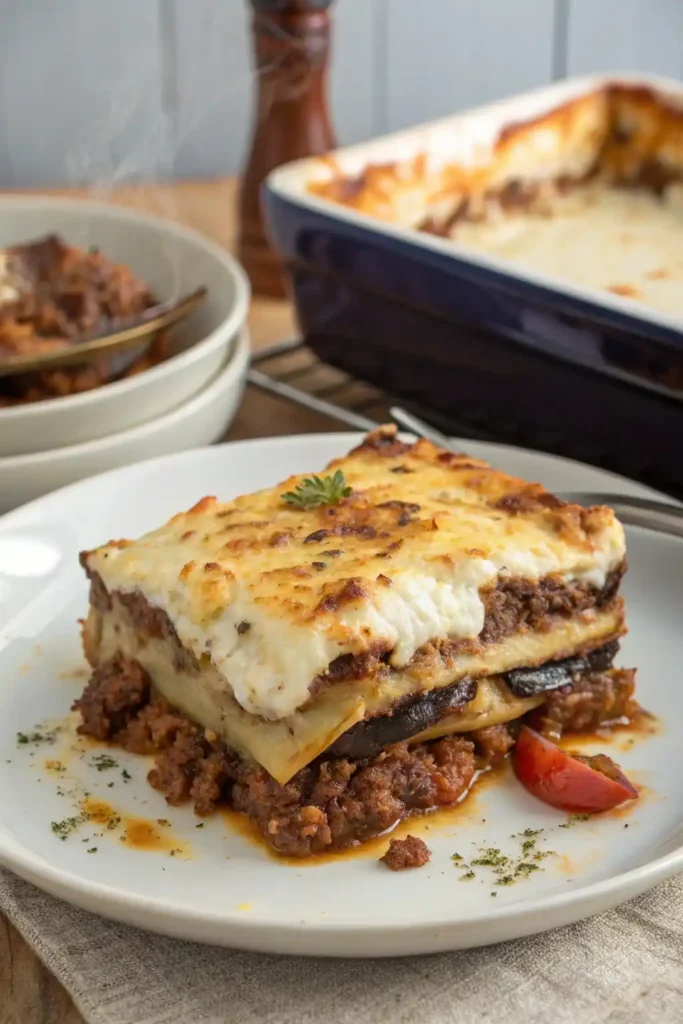
Traditional Greek moussaka’s béchamel includes eggs that set firmly after baking, which helps each slice hold its shape. Modern chefs often mix ricotta and mozzarella cheeses instead of classic béchamel for a lighter version.
Mastering spiced lamb meatballs
Middle Eastern meatballs shine with cumin, garlic, and paprika as perfect appetizer bites. Turkish meatballs get their fresh taste from mint and dill plus warming spices. Moroccan versions feature coriander, cinnamon and fresh herbs paired with cool mint yogurt sauce.
These meatballs keep their shape better when chilled before cooking. Just watch them carefully to keep them from drying out.
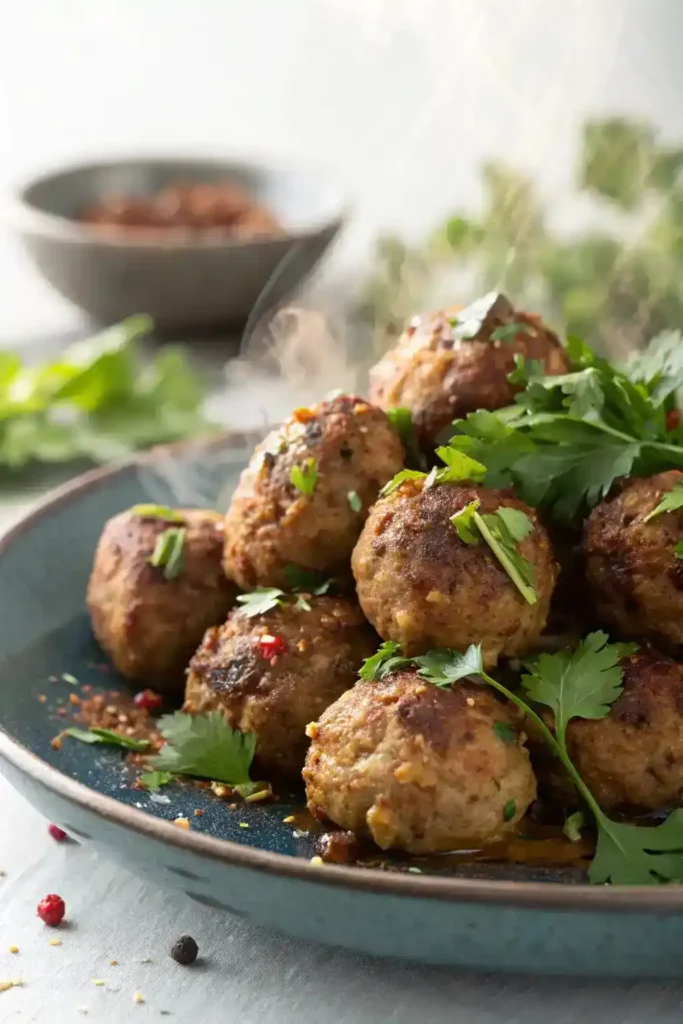
Crafting the perfect lamb burger
Great lamb burgers need the right seasoning balance. The best ones mix ground lamb with garlic, cumin, smoked paprika, oregano, and a hint of cinnamon. Lamb’s rich flavor pairs beautifully with toppings like feta sauce, yogurt cucumber dressing, or herbed mayo.
Shape your patties with a light touch and don’t pack them too tight. Grill until they reach 135°F inside for medium doneness, then let them rest 5 minutes before serving.
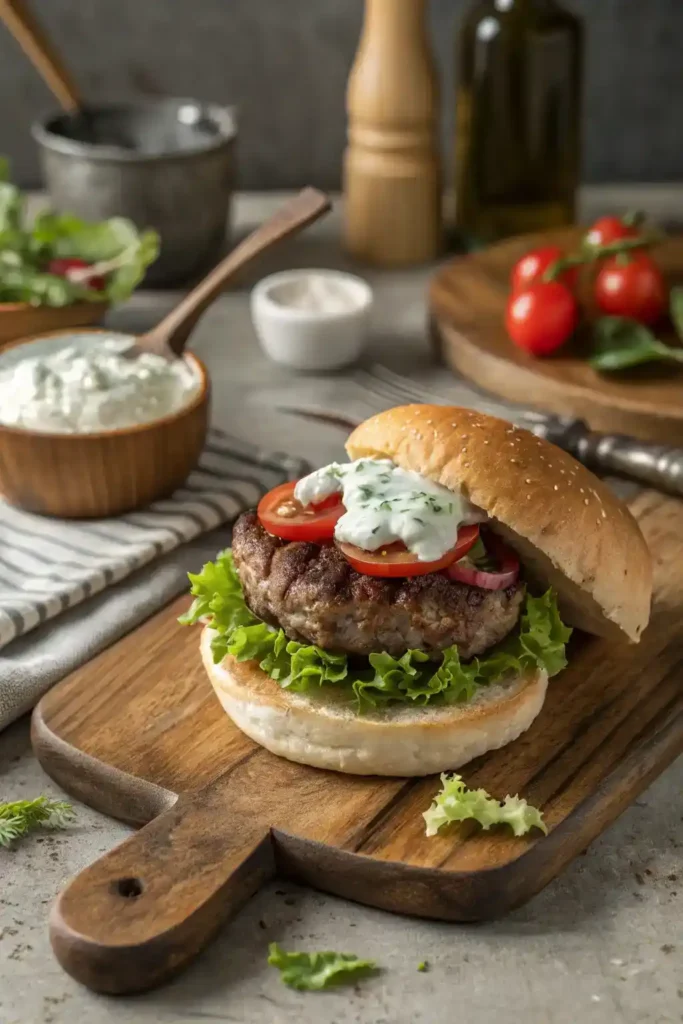
Conclusion
Ground lamb recipes is a versatile protein that belongs in every home cook’s kitchen. Any cook can create restaurant-worthy dishes by picking quality meat with the right fat content. The right cooking temperatures and moisture control will give a perfect, juicy result every time.
You’ll discover endless possibilities with ground lamb, particularly when you combine it with authentic spices from Mediterranean, Middle Eastern, and Indian cooking. These chef-approved methods and flavor combinations can raise simple ground lamb into amazing meals. You can craft traditional kofta, layer a moussaka, or try something new with modern lamb burgers.
Your success with ground lamb recipes comes down to three basics: premium meat selection, temperature control, and confident spice use. These professional tips will help you make restaurant-quality dishes in your kitchen. To learn more recipes and meal ideas, check out our piece at recipesnutritious.com. You’ll find many more chef-inspired techniques and creative ways to cook this exceptional protein.
FAQs
Q1. What are some popular dishes to make with ground lamb? Ground lamb can be used to create a variety of delicious dishes, including lamb burgers, kofta kebabs, moussaka, shepherd’s pie, and lamb meatballs. These dishes showcase the rich flavor of lamb while incorporating different spices and cooking techniques.
Q2. How do I select high-quality ground lamb? Look for ground lamb that has a fine texture, firm consistency, and a vibrant red color with white marbling. Premium ground lamb often comes from boneless shoulder cuts and may be labeled as 100% grass-fed. The ideal fat-to-meat ratio is typically around 80/20 or 70/30 for optimal flavor and moisture.
Q3. What spices work well with ground lamb? Ground lamb pairs excellently with Mediterranean and Middle Eastern spices. Popular choices include cumin, coriander, cinnamon, garlic, rosemary, mint, and oregano. For more complex flavors, try spice blends like za’atar, sumac, or garam masala, depending on the cuisine you’re aiming for.
Q4. What’s the best way to cook ground lamb to ensure it stays juicy? To keep ground lamb juicy, cook it over medium heat rather than high heat. This allows the fat to render gradually while maintaining moisture. Use a meat thermometer to ensure the internal temperature reaches 160°F for food safety. Let the cooked meat rest for about 10 minutes before serving to allow juices to redistribute.
Q5. How can I make restaurant-quality ground lamb dishes at home? To achieve restaurant-quality results, focus on proper seasoning, temperature control, and cooking techniques. Brown the meat well to develop flavor, use fresh herbs and spices, and don’t overcook the lamb. Experiment with authentic recipes from various cuisines and pay attention to accompaniments like sauces and sides that complement the lamb’s rich flavor.

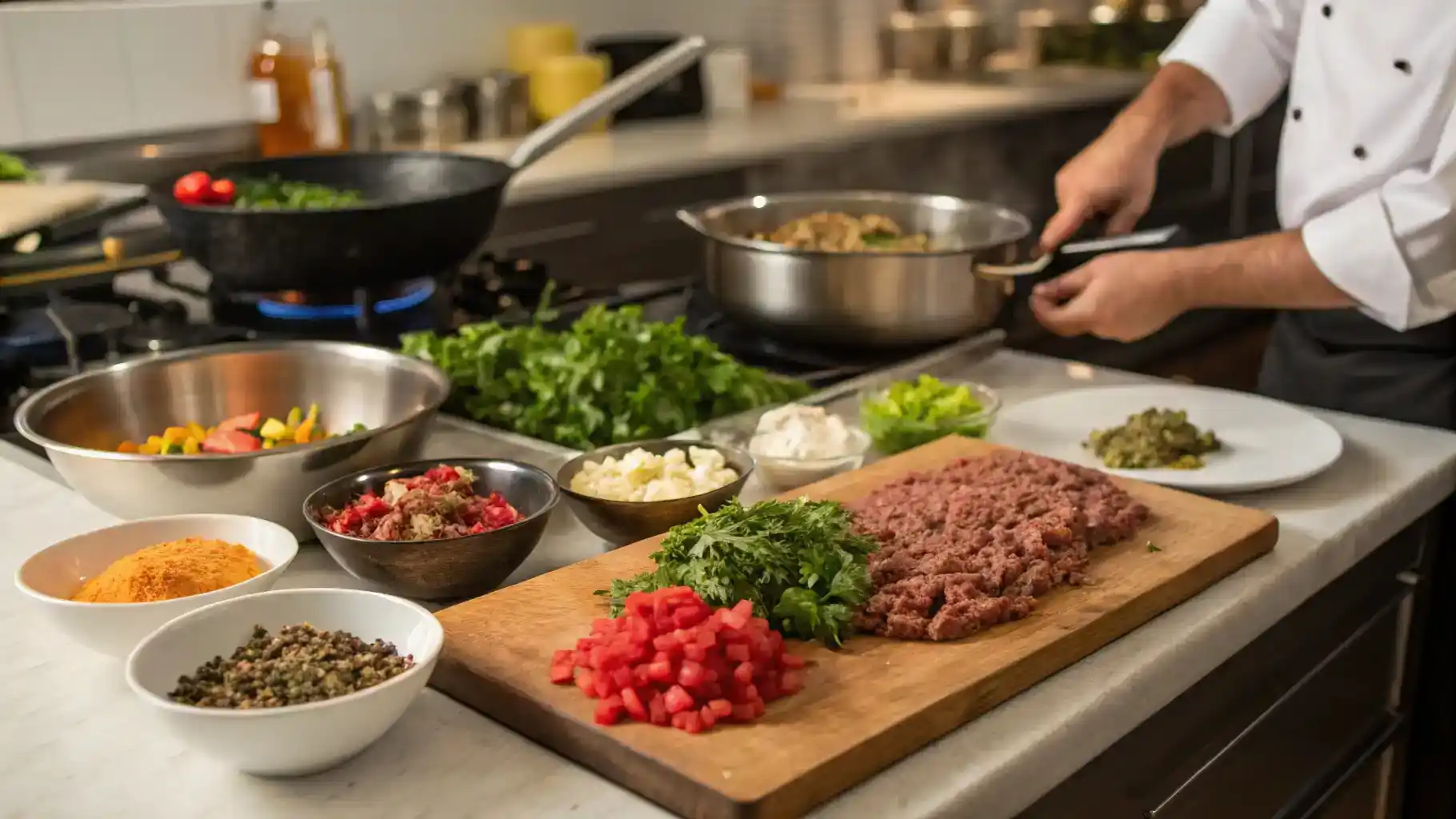
1 thought on “How to Make Easy Ground Lamb Recipes”
Comments are closed.